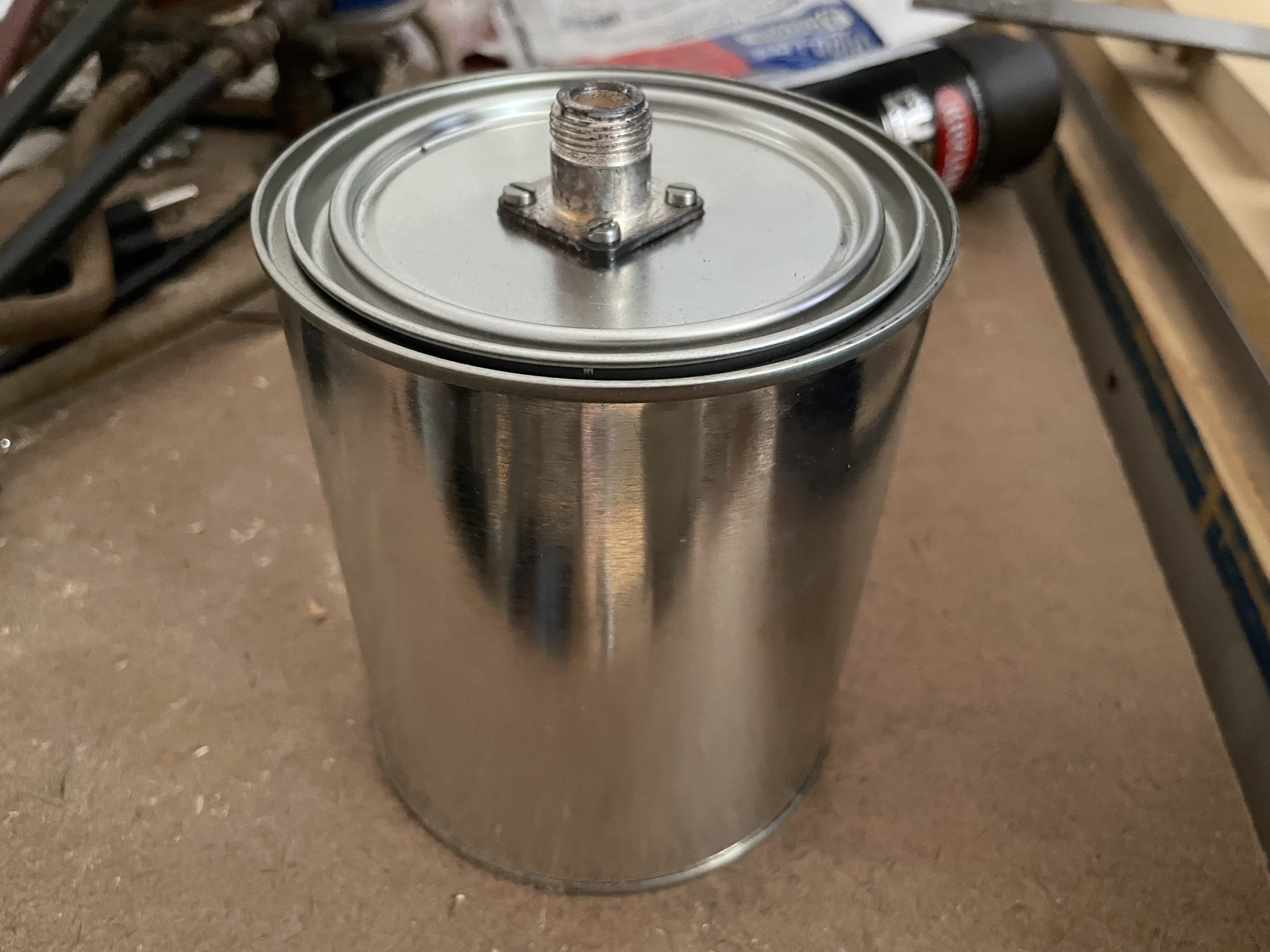What is a dummy load?
A dummy load is a piece of test equipment that can be used in place of an antenna when testing out a transmitter. They consist of either a single or multiple resistors that absorb the RF power out of the transmitter. Cooling is provided either through fins on the dummy load acting as a heat sink, or through the use of a dielectric oil bath. The amount of RF that can be put into a dummy load is dependent on the wattage of the resistors being used. Likewise the amount of resistance value needs to be properly calculated in order to achieve 50Ω.
Parts needed
For this dummy load you'll need just a handful of parts. Best part is you don't need these exact parts, however using different resistance/wattage resistors will change the quantities involved. The items and resistor values that I used are listed below.
- 5x 10Ω 50W resistors
- Quart sized metal can with lid
- N Type panel mount connector
- Dielectric oil (substitute with mineral oil)
- Solder
- Silicone sealant
- Misc wire
- 4 bolts & nuts
Alternative resistors
In my dummy load I used some 10Ω 50W resistors because that's what I had available. While the wattage is complete overkill, it will be capable of handling anything I throw at it. It is possible to use different valued resistors so long as they add up properly. If all you have available is 2Ω or 5Ω or even 50Ω resistors, they're still usable. For values under 50Ω you will want to connect them in series in order to achieve a total of 50Ω. For values over 50Ω, you can connect them in parallel, however that will also bring down the total resistance so you'll need more. Keep in mind that choosing series or parallel will not only effect your resistance, it will effect your wattage. We'll discuss this more below.
Here is an example of using resistors in series as it'll be a bit simpler than parallel. Calculating resistors in series is about as easy as adding, because that's what you're doing. Take the resistance value of all your resistors, add them together, and that is your total resistance. The same thing applies with the wattage; simply add the values together and your result will be the total wattage.

Using the resistors I used as an example, take your five 10Ω resistors and add them together to get 50Ω of total resistance. As mentioned above, the resistor wattage also adds up to give you a total wattage, in my case the total is 250W. While you can get 50Ω resistors with a wattage as high as 25W, it's more practical to use a smaller value resistor to get even higher wattage. You could just as easily substitute a 2Ω 2W resistor which you'd need 25 of (50Ω/2Ω = 25) which would result in a 50W dummy load.
Assembly
The assembly of the dummy load is quite simple to say the least. I took the 1 quart metal can that I purchased at the blue big box hardware store, punched some holes in the top for the N type connector, sand screwed it to the lid. Next step was soldering the resistors together. Mine had leads already attached due to their previous life. After soldering them together I connected one end to the center conductor of the N type and the other end to the shield. I then filled the can about 3/4 or so of the way with some old dielectric oil. Mineral oil will work just fine as well. Next I just stuffed the resistors into the can and hammered down the lid. The final step and a fairly crucial one, make sure to seal around the top where the connector penetrates the lid. Not doing so can cause the oil to spill out if the dummy load gets tipped over.
The End
This is a quick and fairly simple project that can easily be made in an afternoon without breaking the bank.

